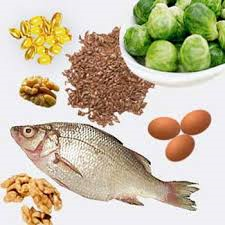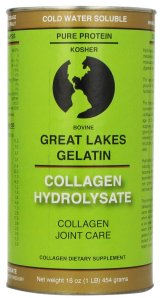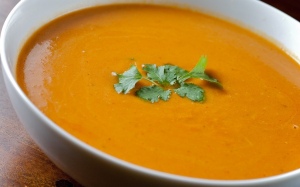The Paleo diet is based upon eating natural, wholesome foods that would have been eaten by our hunter-gatherer ancestors over 2.6 million years ago. It has been thought that hunter gatherers did not suffer from conditions such as obesity, cancer, acne or type 2 diabetes and as we share many of our genes with these hunter gatherer ancestors, it is thought that the lack of these chronic conditions is likely due to differences in diet (although I am sure that the high activity levels of the hunter gatherers would also have gone some way to prevent the conditions.) As a result, the Paleo diet was devised. The followers of this diet eat a ‘very healthy’ diet composed of natural foods such as fresh meats, fish, seafood, fresh fruits, vegetables, seeds, nuts, and oils and by cutting out dairy products, cereal grains, legumes, refined sugars and processed foods.
1. Higher protein intake
In the typical western diet protein makes up 15 % of the calories. Whereas in the Paleo diet protein makes up between 19-35 %. Staple protein sources include fresh meat, seafood, and other animal products such as eggs.
2. Lower carbohydrate intake and lower GI (glycaemic index)
Non-starchy fresh fruits and vegetables make up the main carbohydrate source in the Paleo diet. These foods make up 35-45 % of daily calories. These foods have low GI’s and as a result are slowly digested and absorbed, and do not cause a spike in blood sugar levels.
3. Higher fibre intake
Dietary fibre is known to be essential for good health and followers of the Paleo diet say that whole grains are not the (or the only) place to find it. Followers of the diet have stated that non-starchy vegetables actually contain more than eight times more fibre than whole grains and so are a much better source of this fibre.

4. Moderate to higher fat intake (mainly monounsaturated and polyunsaturated fats with balanced Omega-3 and Omega-6 fats)
It is known that it is not the total amount of fat in the diet that raises blood cholesterol levels and increases risk for heart disease, cancer, and type 2 diabetes, but rather the type of fat. Followers of the Paleo diet have to cut out the trans fats and the Omega-6 polyunsaturated fats that are in many western diets, and they increase their intake of monounsaturated and Omega-3 fats. These fats were the mainstays of Stone Age diets.
5. Higher potassium and lower sodium intake
Unprocessed, fresh foods naturally contain 5 – 10 times more potassium than sodium. Our bodies, like those of people in the Stone Age are adapted to this ratio. Potassium is essential for the heart, kidneys, and other organs to work properly and if there are low potassium levels then there is a risk of high blood pressure, heart disease, and stroke (typically also the same problems linked to excessive dietary sodium.) Today, the average westerner consumes almost twice as much sodium as potassium- which is not the ratio our bodies are adapted to.
6. Net dietary alkaline load that balances dietary acid
This aspect is based on our internal chemistry. It is known that, after digestion, the foods that have been eaten present either a net acid or alkaline load to the kidneys. Typical acid producers are meats, fish, grains, legumes, cheese, and salt, whereas alkaline-yielding foods are fruits and veggies. A lifetime of excessive dietary acid has been thought to promote bone and muscle loss, high blood pressure, and increased risk for kidney stones, it is also though that a high acid diet may aggravate asthma and exercise-induced asthma.
7. Higher intake of Vitamins & Minerals
Whole grains are not a part of the Paleo diet, and they are not a good substitute for lean meats, fruits, and vegetables. Whole grains contain no vitamin C, vitamin A, or vitamin B12. In addition, any of the minerals and some of the B vitamins whole grains do contain are not well absorbed by the body. Therefore cutting them out, and replacing them with other foods allows more minerals and vitamins to be absorbed.
So, to me it all sounds pretty good. I can see how following this diet would be tough, for example eating out in restaurants might be tricky, and you would have to wave good bye to many typical western foods such as pizza, burgers, chips or pasta. However I can see why someone who is looking to be as healthy as possible might follow this diet.
On the Paleo diet you can eat fresh meats (preferably grass fed), fish/seafood, fruits and vegetables, eggs, nuts and seeds and oils such as olive oil, flaxseed oil or coconut oil. However on this diet you can not eat cereal grains, legumes (which include peanuts), all dairy products, refined sugars, potatoes (some followers of the Paleo diet allow sweet potatoes), all processed foods, added salt and refined vegetable oils.
Paleo Recipes To Try
Roasted Butternut Squash Soup
Ingredients
- 1 large butternut squash
- 1 green apple, sliced and cored
- 1 small yellow onion, chopped
- 2 carrots, chopped
- 3 tbsp olive oil
- 2 tsp cinnamon
- 1 1/2 tsp salt
- 1/2 tsp cumin
- 1 tsp chili powder
- 2 tbsp ghee
- 3 cups chicken broth
Method
- Preheat oven to 180 Celsius.
- In a large bowl, combine the butternut squash, olive oil, 1 tsp cinnamon, 1/2 tsp salt, and 1/2 tsp cumin. Mix together, coating the squash well.
- Spread out on a rimmed baking sheet.
- Next, in the same bowl that the butternut squash was in, toss the apple slices, onion, and carrots to coat with the remnants.
- Place on a second rimmed baking sheet and add both baking sheets to the oven.
- Roast for 35-40 minutes until soft, stirring once.
- Heat up ghee over medium heat in a large pot on the stove.
- Add the roasted ingredients and then the chicken broth. Add 1 teaspoon each of salt, cinnamon and chili powder.
- Bring to a boil, then reduce heat to low and simmer, covered, for 20 minutes.
- Using an immersion blender, combine the ingredients until smooth, or transfer to a blender to puree.
- Serve warm.
Grain Free Drop Scones
Ingredients:
- 1 organic medium banana
- 1 tbsp organic coconut flour
- 1 organic large egg
- ½ tsp organic cinnamon powder
- 1 tsp organic vanilla extract
- 1-2 tsp organic coconut oil for cooking
Method
- Put all of your ingredients into a food processor and whizz until smooth.
- Leave to sit for 10 minutes so that the coconut flour expands and absorbs the egg.
- Meanwhile heat a large frying pan on a medium heat, add the coconut oil.
- Now divide the mixture into 4 equal portions in the frying pan to form mini pancakes.
- Cook for a few minutes then flip and cook for a few minutes on the other side.
- The pancakes should be golden and firm on the outside, moist and springy on the inside!
- Serve with a little melted coconut oil and raw honey or whipped coconut cream.
Pecan & Banana Paleo Ice Cream
Prep: 10 min Freeze: 3 hrs
Ingredients:
- 4 large organic bananas
- 4 tbsp raw organic pecan butter
- 2 tbsp Great Lakes Gelatin hydrolase
- 2 tsp raw organic honey
Method
- Chop the bananas into slices and put into a glass bowl.
- Freeze until solid (around 2 hours)
- Remove the banana slices from the freezer and add to your food processor along with all of the other ingredients.
- Blend until smooth.
- Decant the mixture back into your glass bowl and re-freeze until semi solid.
- Remove from the freezer and enjoy!


